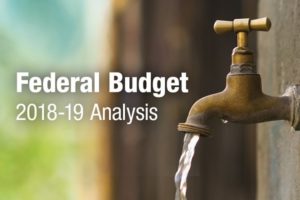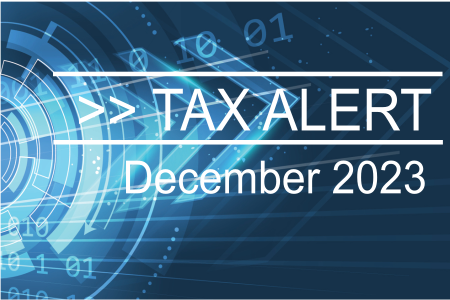“A stronger economy. More jobs. Guaranteeing essential services. The Government living within its means.”

The Federal Government has turned the spending tap back on, signalling the end of the revenue drought since the GFC and the end of the mining investment boom.
As widely anticipated, Treasurer Scott Morrison’s third Budget has cut income taxes, boosted support for senior Australians, delivered $24.5 billion of new infrastructure spending and promised a return to surplus by 2020. That’s a year earlier than previously thought possible and would be the first surplus since 2007-08.
In a call to arms, in what is likely to be the last Budget before the next federal election, the Treasurer urged Australians to ‘stick with this plan for a stronger economy and more jobs because it’s working’.
The Big Picture
The Government expects this year’s budget deficit to shrink to $18.2 billion, down from a forecast before Christmas of $23.6 billion. The deficit is forecast to fall further to $14.5 billion next year before returning to a small surplus of $2.2 billion in 2020.
Net debt is expected to peak at 18.6 per cent of gross domestic product (GDP) this year and fall to 3.8 per cent of GDP in a decade. Importantly, the budget surplus is not expected to top 1 per cent of GDP until 2026.
The Budget’s major spending promises reflect a stronger economic outlook, with growth of 4.25 per cent now expected this financial year compared with 3.5 per cent in the last Budget update. GDP is set to rise $73 billion this year, fuelled by higher tax revenues, record job creation and fewer people on welfare. The government is assuming wages growth of 3.5 per cent a year from 2020, despite it currently tracking at just 2.1 per cent.
The Treasurer has pledged to limit taxes to no more than 23.9 per cent of GDP, but with spending running at around 25 per cent of GDP, that still leaves a gap between money flowing in and flowing out.
Major tax overhaul
In an attempt to win over middle Australia, the Treasurer announced major tax reform which will cost $140 billion over a decade.
Ten million low and middle-income earners earning up to $90,000 a year will receive up to $530 in tax relief per year beginning on July 1. Wealthier Australians will have to wait a bit longer under a sweeping 7-year plan to create a single income tax rate of 32.5 per cent for workers earning between $41,000 and $200,000 a year.
As a result, 94 per cent of taxpayers will pay no more than 32.5c in the dollar income tax compared with 63 per cent today. This would effectively eradicate bracket creep for millions of workers, so an increase in salary or overtime would not push people into a higher tax bracket.
At the same time, the Treasurer confirmed that the government no longer needs to increase the Medicare Levy from 2 per cent to 2.5 per cent to fund the National Disability Insurance Scheme. This will avoid further pressure on family budgets but remove a significant boost to government coffers.
The second phase of company tax cuts for big business remain in the Budget but face a rocky passage through the Senate. Meanwhile, small business will applaud the extension of the popular $20,000 instant asset write-off on new equipment purchases for a further 12 months.
Tax cuts will be partially underpinned by a $5.3 billion crackdown on the black economy. Also, the ATO will receive a $260 million funding boost from July to pursue taxpayers who over claim on work-related expenses.
Healthcare and support for seniors
Aged care is set to get big injection of funds as baby boomers move into retirement. The Treasurer announced an increase in aged care funding over four years, including $1.6 billion for 14,000 additional home care packages to help older people stay in their own home for longer.
An extra $1.4 billion for listings on the Pharmaceutical Benefits Scheme will also be added to assist Australians with serious illnesses to afford necessary drugs.
There’s also $1.3 billion over 10 years to a National Health and Medical Industry growth plan, which included $500 million for genome research.
The Pensioner Work Bonus will be extended so retirees can earn more money without affecting their pension. Retirees and now self-employed seniors will be able to earn up to $7,800 a year before reducing their pension payments.
The Pension Loans Scheme, a type of government-backed reverse mortgage, will also be expanded to include full age pensioners and self-funded retirees to the value of $17,787 per couple. The scheme is currently restricted to retired home owners who are too wealthy to qualify for a full Age Pension.
Money for roads and rail
The Government’s $24.5 billion infrastructure spend, designed to alleviate transport bottlenecks will provides a revenue boost for companies involved in the planning and construction as well as job creation for locals.
In Victoria, major projects include $5 billion for a Melbourne Airport rail link and 1.75 billion to build Melbourne’s North East Link and new tunnels and lanes for the Eastern Freeway.
In Queensland, there’s $1 billion for the M1 between Brisbane and the Gold Coast and $390 million to upgrade the Sunshine Coast rail network. In NSW, $971 million is earmarked for the Coffs Harbour bypass and $400 million for the Port Botany rail duplication. And in West Australia, $500 million to upgrade the Ellenbrook rail line.
Education and family support
There are no new announcements on funding for schools and universities, although the government will break its freeze on university funding by granting around 2000 new places across three regional universities.
The controversial school chaplains program will also be funded permanently at a cost of $61.7 million a year.
The national agreement on childcare for 4-year-olds has been extended to 2019 and an extra $54 million has been allocated to tackle sexual assault, domestic violence, cyber safety and elder abuse.
While there is no increase in the Newstart allowance for the unemployed, regional students will have easier access to Youth Allowance with a lighter parental income test.
Science, innovation and the environment
As previously announced, $500 million will be allocated over 7 years to protect the Great Barrier Reef from climate change and pollution.
Savings will be made by tightening the Research and Development (R&D) tax incentive amid mounting concerns the scheme is being rorted. Savings of $2 billion are pencilled in over the first 4 years.
Ongoing focus on national security
The government will invest $294 million to strengthen aviation, air cargo and mail security. This includes enhancing security at regional airports, increasing the number of officers, dogs and full-body scanners at major airports and boosting high tech screening of inbound cargo and mail.
Defence spending is on track to reach about 2 per cent of GDP by 2021, with $36.4 billion earmarked for Defence next financial year.
The foreign aid budget will be frozen. A large portion of this will be spent in the Pacific region as security concerns grow in the area.
Looking ahead
Australia is in a much stronger economic position than it was a year ago, but question marks remain over the sustainability of new spending promises and whether business tax cuts will make it through the Senate.
If the Turnbull Government chooses to call an election this year, voters will want to be satisfied that business conditions that underpin spending promises reaching a decade into the future are more than a temporary phenomenon, and that a recent lift in tax revenues is not a passing trend.
Did you enjoy this article?
Click below to share it
More News Articles

Retirement Planning: It’s Not all About the Money
Retirement is often a massive life change for the majority of people who experience it

FBT – How Fringe Benefits Tax Works
FBT is separate to income tax. It’s calculated on the taxable value of the fringe benefit

Tax Alert December 2023
The ATO is getting back to business with it’s lenient approach during the pandemic over, it’s focus now is returning to traditional debt collection

How a Super Recontribution Strategy Could Improve Your Tax Position
The main reason for implementing a recontribution strategy is to reduce the taxable component of your super and increase the tax-free component

Rental investor? How to Get Your Tax Return Right
Extra care is needed when lodging returns with rentals

What to do if You’ve Been Scammed
Know that you are not alone and you can recover from this. There is support available, if and when you need it
Connect Through our Socials
While you may have come to us from a variety of sources, the time has never been better to join us.
Connect through out socials to keep up to date with our latest news and get some tips.




